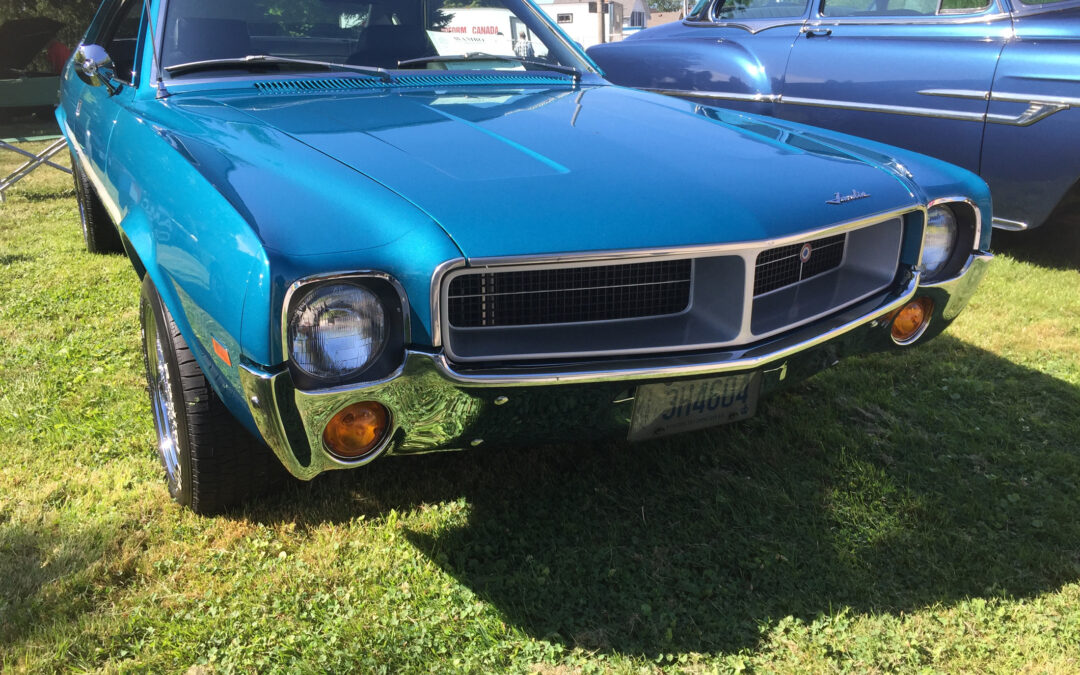I worked for a used car lot in St. Catharines during the summers of 1977 and 1978, and drove a lot of different vehicles, all of them in various states of disrepair and past glory.
Several are well remembered, and among them was a 1969 AMC Javelin, hunter green in colour and fitted with a very muscular 390 V8. The Javelin was on the lot only briefly, because such pony cars – even AMC’s singular entry – invariably sold quickly. This particular Javelin, which I recall was in very good condition, sold for less than $1,000, based on the Blue Book estimate at the time.
Javelin sold for such a relatively paltry sum, because it was an AMC product, and not a pony car from the stables of General Motors, Ford or Chrysler. Had it been a Camaro, even in poor condition, it would have commanded at least the same price. Ditto for a Mustang.
Whoever bought the Javelin purchased a very good car. And it was attractive too. But Javelin was low on the pony car pecking order of the day and never garnered the respect or admiration it deserved.
AMC’s reputation was built on designing and manufacturing quirky-looking economy cars that were less expensive to buy than their rivals. As a result, they usually couldn’t hold their value in the used car market. That didn’t mean they were poorly built cars or poorly designed. But AMC vehicles were usually ranked behind the so-called Big Three. Even in a GM town like St. Catharines, used Chrysler products usually sold for more money than vehicles produced by the American Motors Corporation.
Even though AMC was perennially short of cash, and its product line wasn’t as long as Ford, GM or Chrysler’s, the Kenosha, Wisc.-based car company couldn’t resist the lure of the pony car revolution, which had been launched by Ford in March 1964 with its Mustang.
AMC’s initial response, because it didn’t have the cash, was to put a fastback design on its two-door Rambler Classic and call it the Marlin. The 1965 Marlin is an exceedingly rare car today, because so few were sold. And it didn’t quite find an audience, although it did look somewhat like an early Dodge Charger (actually, the fastback Charger was introduced a year after the Marlin came out in 1965).
AMC chief designer Richard Teague subsequently decided to design a pony car from the ground up, and the result was Javelin, which was sold for the 1968 model year.
The Javelin was spun off from the AMX, a project or experimental car developed by AMC in 1965. Built on a compact frame, the AMX was designed to compete with Corvette, at about 25 percent less Corvette’s purchase price.
The AMX featured several industry “firsts” for the American-based industry, including a dashboard that was mould-injected. Even today, the AMX dashboard is a beautiful piece of automotive artwork.
The Javelin was actually a “pony car” version of the AMX. In its first model year, it offered four different engines – a large six cylinder, as well as three V8 engines, including the 390. That engine offered 315 horsepower and 425 pounds per feet of torque, enough to send Javelin from zero to 60 miles per hour within seven seconds.
Road & Track liked the Javelin, describing its, “big, heavy, super-powerful engine” as an asset in, “such a small vehicle.” The magazine described the styling as “pleasant”.
The Javelin certainly was longer and roomier than the Mustang, Camaro or Plymouth Barracuda. And in retrospect, Javelin was perhaps the most attractive of the four, although a 1968 Camaro remains a thing of beauty, even 52 years after its launch. Still, some automotive journalists consider Javelin to be one of the most attractive car designs to come out of the sixties.
Certainly, Teague was a master at his craft, and was accustomed to working with few resources. When AMC in the mid-sixties announced that it wanted to introduce a new compact car, Teague was left with the job, but without the resources normally accorded the other automakers. What he did to stretch a dollar was ingenious – he used the same doors for the new Rambler as were used for the larger, full-size Ambassador. It saved AMC a lot of money.
Teague’s new Javelin sold relatively well in its first year, about 56,000 units. That compared with Marlin’s almost 11,000 units in 1965.
AMC’s little pony car remained relatively unchanged for 1969, and again sold a respectable 40,675 units. Of course, those sales were miniscule when compared to Mustang or Camaro, but AMC was a miniscule company when compared with Ford or General Motors.
Javelin’s basic package remained unchanged for 1970, although the front end was extended somewhat, with a new front grille and a longer hood. The car was rather attractive, especially the Javelin SST with the “Go Package.”
For 1971, AMC took a page from Ford and made its pony car bigger, lower, heavier – and arguably uglier. The new design had sculpted fender bulges and was quite “swoopy.” Inside, the dashboard literally wrapped itself around the driver, and was, in hindsight, far more daring than what was being offered by Mustang or Camaro.
The same Javelin design carried forward until the 1974 model year, but with some minor changes, and helped the company remain profitable.
But the days of the pony car were ending (actually, they had ended years earlier). Mustang was now a four-cylinder parody of the car that had launched the movement, although Camaro and Firebird gamely soldiered on.
But even more important for AMC was Teague’s latest project, the Pacer, which was to be introduced in 1975. AMC needed the manufacturing space for Pacer, and so Javelin was quietly retired, even though it had sold almost 28,000 units in its final model year.
Today when you walk through an exhibition of older vehicles from the 1960s and 1970s, there are sometimes rows upon rows of Camaros and Mustangs, and it’s not uncommon to not see a single Javelin. And so it was with some pleasure to view Jed and Chris Collins’ 1969 Javelin at a recent car show in Wallaceburg, Ontario. The Collins’ Javelin is equipped with the 343 V8 engine and is in wonderful condition.
Despite its smaller financial resources, American Motors built one heck of a good pony car 50 years ago.

